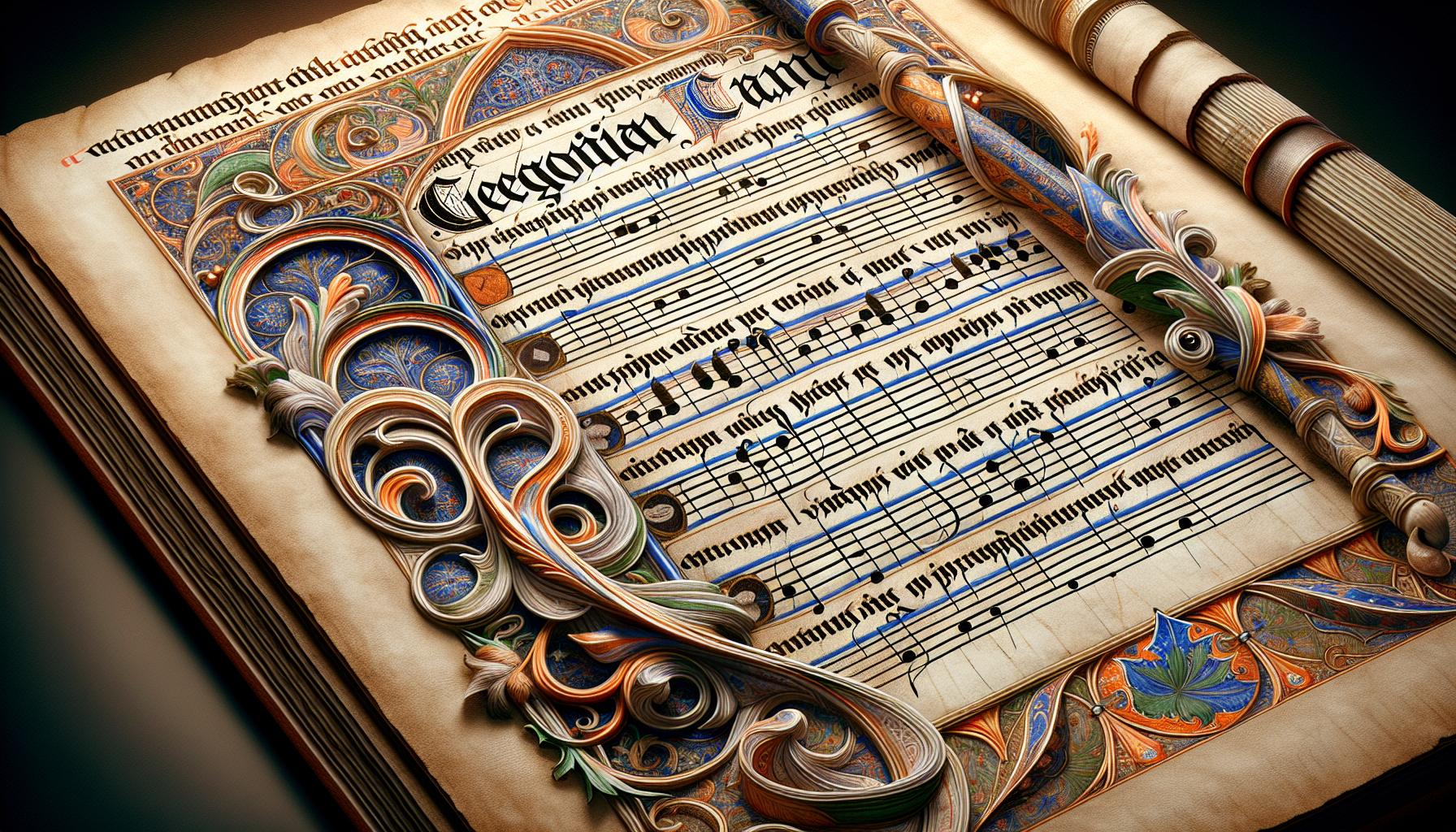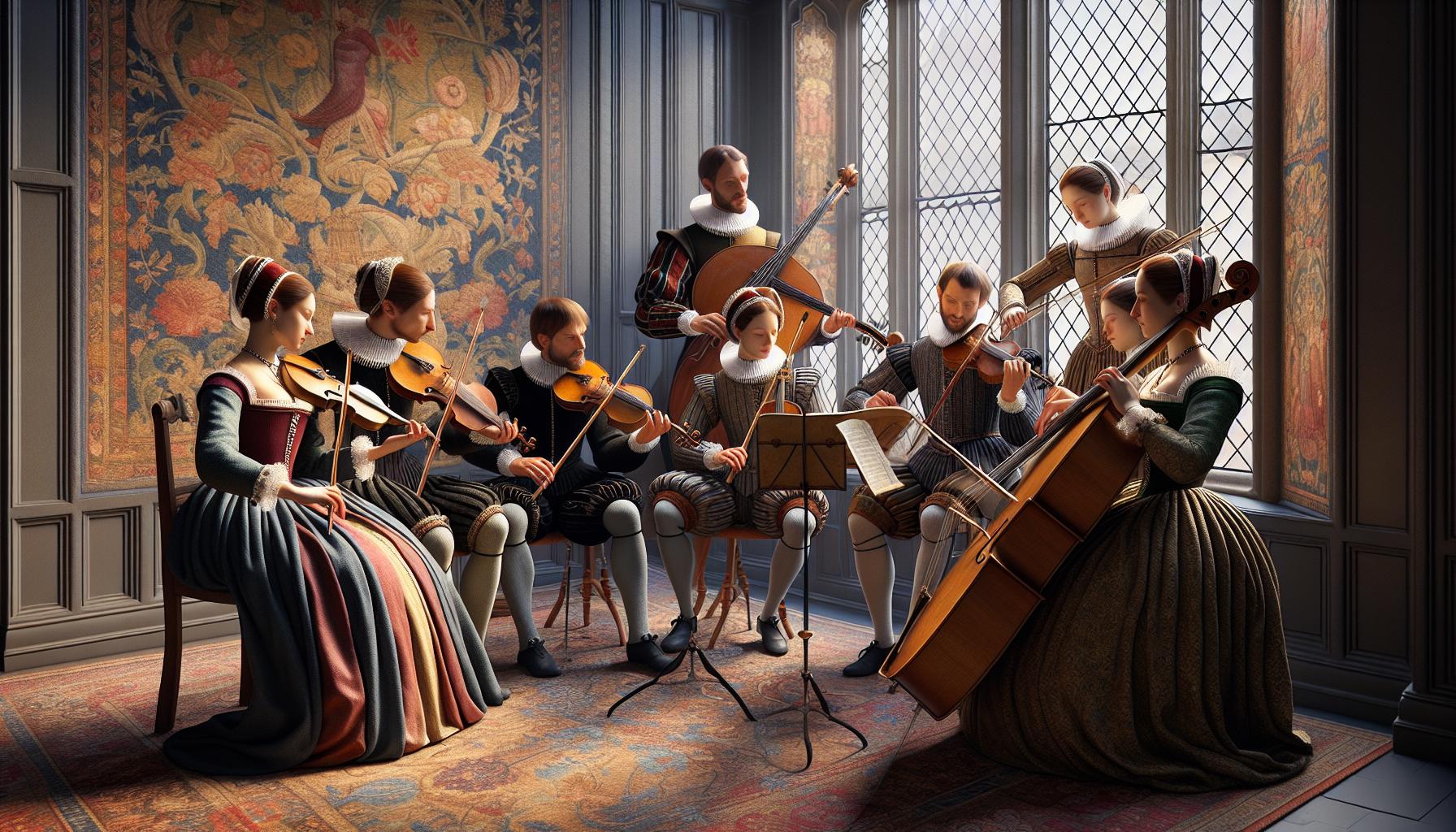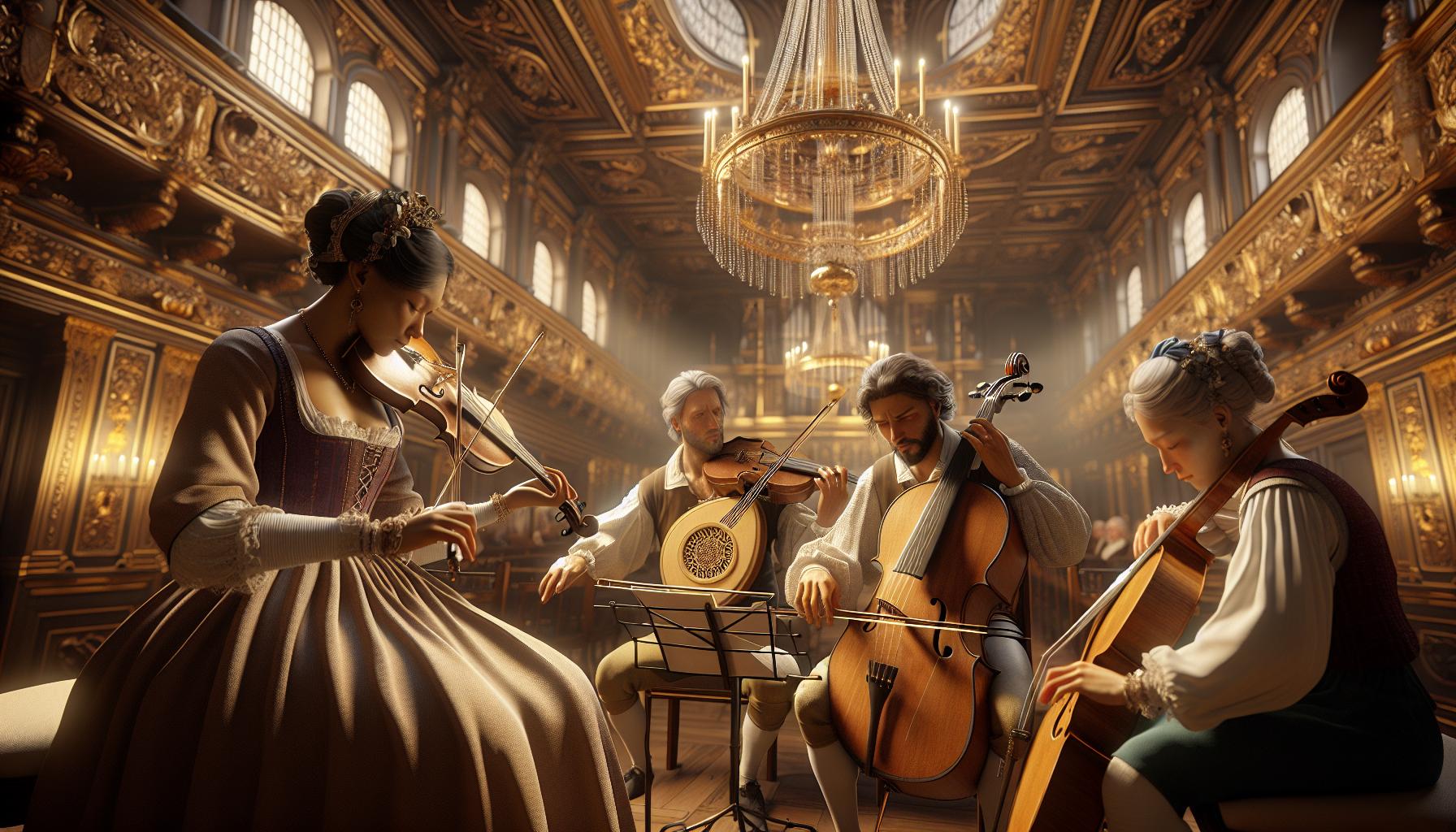Music has always been a powerful force, shaping cultures and reflecting societal changes throughout history. From the haunting melodies of the Middle Ages to the electrifying beats of modern pop, each era of music tells a unique story. Understanding these distinct periods not only enriches one’s appreciation for music but also highlights the evolution of artistic expression.
As styles and genres emerged, they mirrored the innovations and challenges of their times. The Baroque era introduced intricate compositions, while the Romantic period brought forth emotion and individualism. Today, genres continue to blend and evolve, creating a rich tapestry of sound that resonates globally. Exploring the eras of music history reveals the dynamic interplay between art and society, inviting listeners to dive deeper into the rhythms of the past.
Key Takeaways
- Historical Context: Music history is divided into distinct eras, each reflecting cultural changes and societal influences, enhancing our understanding of artistic expression.
- Middle Ages to Renaissance: The transition from primarily vocal Gregorian chants in the Middle Ages to the harmonious and instrumentally rich compositions of the Renaissance emphasizes the evolution of musical complexity.
- Baroque to Classical: The Baroque era introduced elaborate ornamentation and dynamic contrasts, while the Classical era focused on clarity, balance, and structured forms in compositions.
- Romantic Era Innovations: The Romantic period prioritized emotional expression with varied orchestration, expanding the thematic elements found in music.
- 20th Century Diversity: The 20th century saw the emergence of diverse genres like jazz, blues, rock, and hip-hop, reflecting significant technological advancements and cultural shifts.
- Technological Impact: Advances in technology, such as recording and distribution innovations, have dramatically transformed how music is created, consumed, and appreciated in contemporary society.
Music History Eras
Music history encompasses distinct eras that reflect the evolution of artistic expression. Each era has unique characteristics, styles, and influences that shaped its sound.
Middle Ages (500-1400)
- Incorporates Gregorian chant and early polyphony.
- Utilizes limited instrumentation, primarily vocal.
- Exhibits religious themes, reflecting the church’s influence on society.
Renaissance (1400-1600)
- Emphasizes harmony and the use of instruments.
- Characterized by the rise of secular music alongside sacred compositions.
- Features notable composers like Josquin des Prez and Palestrina.
Baroque (1600-1750)
- Known for elaborate musical ornamentation and complex polyphony.
- Introduces opera as a popular genre.
- Highlights composers such as Bach, Handel, and Vivaldi.
Classical (1750-1820)
- Focuses on clarity, balance, and form.
- Prefers structured compositions like symphonies and sonatas.
- Celebrates composers like Mozart, Haydn, and Beethoven.
Romantic (1820-1900)
- Prioritizes emotional expression and individualism.
- Expands orchestra size and introduces new thematic material.
- Acknowledges influential composers such as Chopin, Wagner, and Tchaikovsky.
- Features diverse genres such as jazz, rock, hip-hop, and electronic.
- Mirrors technological advancements and social changes.
- Celebrates eclectic artists and movements that push musical boundaries.
These eras exhibit how music adapts to cultural shifts, serving as a reflection of society’s ongoing narrative.
The Medieval Era

The Medieval Era, spanning from 500 to 1400, marks a significant period in music history. This era laid the groundwork for future musical forms, with a strong emphasis on vocal music and religious themes.
Characteristics of the Medieval Era
- Gregorian Chant: Gregorian chant, a form of plainchant, dominated the early Medieval period. This monophonic vocal music, sung in Latin, mainly supported liturgical practices.
- Early Polyphony: Polyphony began in the late Medieval period with the introduction of multiple independent vocal lines. This musical texture evolved significantly, leading to more complex forms of expression.
- Vocal Focus: Compositions primarily featured vocal instrumentation. Instruments played a secondary role, often accompanying voices rather than leading compositions.
- Religious Themes: Most music during this era centered around religious themes. Compositions served to enhance spiritual experiences within church services and ceremonies.
- Oral Tradition: Much of the music was transmitted orally, affecting the preservation of musical works. This reliance on oral transmission limited the documentation of various compositions.
- Hildegard von Bingen (1098-1179): Known for her mystical and visionary compositions, she contributed significantly to the body of sacred music. Her collection “Symphonia armoniae celestium revelationum” showcases her unique styles.
- Pope Gregory I (540-604): Traditionally credited with organizing the chant repertoire, while actual compositions are anonymous, his influence on the development of Western liturgical music is undeniable.
- Leonin (circa 1150-1201): A pioneer of early polyphonic music, he composed “Magnus Liber,” which features organum, an early form of polyphony emphasizing the chant melody.
- Perotin (circa 1200): Known for expanding polyphonic structures, he built upon Leonin’s groundwork. His works, like “Viderunt Omnes,” display intricate vocal lines and harmonies.
- Anonymous Composers: Much of the Medieval music remains attributed to anonymous composers. This anonymity highlights the communal aspect of music composition during the period, where works were often collective endeavors.
This section highlights the foundational aspects of the Medieval Era, illustrating its enduring influence on the evolution of Western music.
The Renaissance Era

The Renaissance Era, spanning from 1400 to 1600, marked a significant shift in music, characterized by an increased emphasis on harmony and the emergence of secular music alongside sacred compositions. This period produced innovative techniques that shaped the future of Western music.
Key Features of Renaissance Music
Renaissance music features distinctive elements that define its unique character:
- Polyphony: It showcases multiple independent melodies, creating rich textures. Composers skillfully crafted interwoven vocal lines, enhancing musical complexity.
- Humanism Influence: It reflects humanist ideals, emphasizing emotion and individuality. Music began to express personal sentiment, moving beyond mere religious themes.
- Modal System: It predominantly uses modes rather than the major/minor scales. This modal structure contributed to the unique sound of Renaissance compositions.
- Instrumentation: Vocal music remained central, yet instrumental music gained prominence. The use of instruments like viols and recorders became common, adding depth to ensemble performances.
- Secular Themes: It saw a rise in secular songs and madrigals. Composers explored themes such as love and nature, making music more accessible to the general public.
Influential Figures in Renaissance Music
Several key composers played crucial roles in the development of Renaissance music:
- Josquin des Prez: Often hailed as a master of polyphony, he influenced future generations with works that blended emotional depth and intricate melodic lines.
- Palestrina: Known for his smooth, clear style, he focused on sacred music, perfecting the techniques of counterpoint that became foundational for later composers.
- Thomas Tallis: He contributed significantly to the English choral tradition, creating music that bridged early polyphonic styles and later developments.
- Orlando di Lasso: His vast output spanned various styles, reflecting the diverse musical landscape of Europe during the Renaissance.
These figures exemplified the rich tapestry of Renaissance music, marking a pivotal period that set the stage for subsequent musical innovations.
The Baroque Era

The Baroque era, spanning from 1600 to 1750, is recognized for its intricate musical compositions and dramatic expressiveness. This period introduced significant innovations in form, style, and instrumentation, profoundly shaping the future of Western music.
Distinctive Elements of Baroque Music
- Ornamentation: Baroque music features elaborate ornamentation, including trills and appoggiaturas, enhancing melodic lines.
- Contrast: The use of contrast in dynamics, timbre, and texture creates a dramatic effect, exemplified in works by composers like Vivaldi.
- Melody and Harmony: Strong, expressive melodies with a harmonic foundation promote emotional depth in compositions.
- Basso Continuo: The basso continuo, a continuous bass line played by instruments like cello or lute, provides harmonic structure throughout pieces.
- Form and Structure: The development of forms such as the concerto, sonata, and opera reflects a shift toward structured compositions, allowing for more complex musical narratives.
- Johann Sebastian Bach: Renowned for his masterpieces in organ and choral music, Bach’s works embody the complexity and depth of Baroque counterpoint.
- George Frideric Handel: Known for his operas, oratorios, and orchestral suites, Handel’s compositions highlight dramatic contrasts and rich vocal lines.
- Antonio Vivaldi: Famous for “The Four Seasons,” Vivaldi’s innovative concertos emphasize lively rhythms and vivid imagery, displaying nature’s beauty.
- Henry Purcell: A prominent English composer, Purcell contributed significantly to the development of opera and theatrical music, blending native elements with European styles.
- Arcangelo Corelli: His influence on string music and the concerto grosso form shaped the Baroque style, emphasizing the importance of ensemble playing.
The Baroque era represents a critical phase in music history, with its distinctive characteristics and influential composers laying the groundwork for future musical developments.
The Classical Era
The Classical Era, spanning from 1750 to 1820, emphasizes clarity, balance, and structured compositions. This period showcases a shift towards more homophonic textures, where a single melody is supported by harmonic accompaniment.
Hallmarks of Classical Music
- Clarity: Classical music features clear melodies and well-defined forms, allowing listeners to easily follow musical ideas.
- Balance: Composers achieve balance through symmetrical phrases and regular cadences, creating a sense of order and proportion.
- Form: The development of distinct forms, such as sonata form, symphony, and string quartet, becomes prominent during this era, facilitating structured composition.
- Homophonic Texture: A shift from polyphony to homophony focuses on a single melodic line with accompanying harmonies, enhancing accessibility for audiences.
- Melodic Development: The use of themes and variations allows composers to explore and develop ideas throughout a piece, adding depth to the musical narrative.
- Wolfgang Amadeus Mozart: Celebrated for his operas, symphonies, and chamber music, Mozart’s works exemplify the balance and clarity of the era.
- Ludwig van Beethoven: Known for expanding forms and emotional expression, Beethoven’s compositions bridge the Classical and Romantic periods, reshaping musical expectations.
- Franz Joseph Haydn: Recognized as the “father of the symphony,” Haydn’s innovative approach to structure and melody laid the groundwork for later composers.
- Carl Philipp Emanuel Bach: Influential in the evolution of the sonata and symphony, C.P.E. Bach’s works reflect the transition towards the emotive characteristics of the Romantic period.
- Wolfgang Amadeus Mozart: Celebrated for his operas, symphonies, and chamber music, Mozart’s works exemplify the balance and clarity of the era.
The Romantic Era
The Romantic period, spanning from 1820 to 1900, emphasizes emotional expression, individuality, and the expansion of orchestral size. This era marks a significant departure from the structured forms of the Classical era, offering a rich tapestry of sounds and themes.
Features of Romantic Music
Romantic music is characterized by its emotional depth and innovative use of orchestration. Examples of features include:
- Expressive Melodies: Melodies convey intense feelings, often involving sweeping phrases and dramatic contrasts.
- Expanded Orchestras: Larger orchestras allow for a broader range of timbres and enhanced dynamic contrasts.
- Nationalism: Composers frequently incorporate folk themes and styles, reflecting their cultural identities.
- Programmatic Content: Descriptive music, linked to a story or image, emerges in compositions such as tone poems and symphonic poems.
- Increased Use of Dissonance: Composers employ dissonance to heighten emotional tension and resolve it with innovative harmonic progressions.
Significant Composers and Their Contributions
Numerous composers defined the Romantic era through their groundbreaking works and distinctive styles. Key figures include:
- Frédéric Chopin: Focused on piano music, creating evocative works such as nocturnes and ballades that emphasize lyrical melodies and rich harmonies.
- Richard Wagner: Revolutionized opera with his concept of Gesamtkunstwerk, combining music, drama, and visual arts, exemplified in operas like “The Ring Cycle.”
- Johannes Brahms: Merged classical forms with Romantic sensibilities, composing symphonies, concertos, and chamber works characterized by structural integrity and emotional depth.
- Pyotr Ilyich Tchaikovsky: Known for ballets and symphonies, his compositions such as “Swan Lake” and “1812 Overture” showcase vibrant orchestration and emotional intensity.
- Franz Liszt: Introduced the symphonic poem and pushed the boundaries of piano technique, composing virtuosic works that express a wide array of emotions.
The Romantic era shaped music through its deep emotional resonance and innovation, laying the groundwork for future developments in the 20th century.
The 20th Century and Beyond
The 20th century marked a dramatic evolution in music, introducing various genres that transformed artistic expression. This era reflects cultural shifts and technological advancements, influencing how music is created and consumed.
Evolution of Music in the 20th Century
The 20th century witnessed the emergence of diverse genres, including jazz, blues, rock and roll, and hip-hop. Jazz originated in African American communities in the early 1900s, characterized by improvisation and syncopated rhythms. Key figures include Louis Armstrong and Duke Ellington.
Blues evolved in the Deep South, rooted in African American folk traditions, emphasizing sorrow and resilience, with influential artists like B.B. King and Muddy Waters. Rock and roll emerged in the 1950s, combining rhythm and blues with country influences. Icons such as Elvis Presley and Chuck Berry played crucial roles in popularizing this genre.
The late 20th century saw the rise of hip-hop, a cultural movement that includes music, dance, and art. Figures like Grandmaster Flash and Tupac Shakur significantly impacted the genre, using music as a platform for social commentary.
Various other genres such as punk, electronic, and pop also thrived, challenging traditional norms and promoting self-expression. These genres continually shape contemporary music, reflecting ongoing cultural dialogues.
Impact of Technology on Music History
Technology significantly reshaped music production and distribution in the 20th century. The introduction of the phonograph revolutionized how music was recorded and consumed, allowing for mass distribution of music.
The invention of magnetic tape led to advancements in recording quality and techniques, making it easier for artists to experiment with sounds. Innovations such as synthesizers and drum machines opened new avenues for creative expression in genres like electronic and pop music.
The rise of the internet in the late 20th century transformed music consumption, enabling streaming platforms to dominate the industry. Artists now distribute their work globally, reaching audiences without traditional barriers. These technological advancements continue to influence contemporary music trends, fostering greater accessibility and diversity in musical expression.
Music history is a vibrant tapestry woven from the threads of culture and societal evolution. Each era brings its own unique contributions and innovations that resonate through time. The interplay between music and technology has continually reshaped how sounds are created and shared, leading to a rich diversity in genres and styles.
Understanding these historical contexts not only enriches one’s appreciation for music but also highlights its role as a powerful vehicle for expression and connection. As contemporary artists draw from this legacy, the echoes of the past remain alive, inviting listeners to engage with the rhythms that define our collective experience.